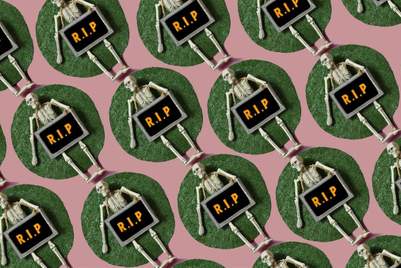
There are plenty of advertising agencies. Some may say too many. But in any market, there are always a handful of agencies that are considered hot. Particularly creative agencies. The agencies that are winning all the awards. The creative agencies with what I call ‘talkability’—the ones the industry is talking about. Some may unkindly say the 'flavour of the month'. But nevertheless, no matter what market, they have one thing in common: they appear as a scarcity. Only a handful of agencies in any market are at the top of marketers’ minds and on the tip of industry tongues.
As a pitch consultant, you notice it not just through the trade media, but also when the marketers come to you wanting to run a pitch and wondering if this agency or that agency would be right for them. Conventional wisdom says most marketers only know three agencies: the one they left, the one they’re with and one other. When marketers are all nominating the same handful of creative agencies, you know they're hot.
But there is something else I have noticed about these hot agencies. No matter the market, they also have something else in common. They are beholden to a selection of the major brands on their client rosters. Usually the high profile, big spending brands from the big spending, competitive categories like telecommunications, or alcoholic beverages.
For example, in a recent pitch, we were approached by a marketer wanting to meet with the hottest, creative shops in the market. We had to inform the client that three of the top creative agencies were all tied up with the client's biggest competitor.
This is not an accident. While it may seem natural that high-profile brands will select the high-profile agencies to work on their business, it is not just fate. Especially when you may also find that quite a few of these high-profile brands will have not one or two of these desirable agencies, but often many more.
Some brands will insert a non-compete clause that exists post-termination, meaning they take the agency out of the competitive market even after they dump it.
It is a deliberate strategy by those brands. By tying up the hot agencies on their rosters they are effectively taking these high performers out of the market. Often with contracts that include exclusivity clauses and non-compete clauses that extend way beyond the termination period. And all for a chance to work on one of many brands, or a project, or a segment.
Look around the market, be it global, regional or local. How many brands appear to have a roster of hot agencies all working on their brand or brands? They may claim that they are either large enough or diverse enough to justify multiple advertising agencies. But the fact is this is how many competitive brands make sure their competitors do not have access to the best agencies available. They simply tie up the best and brightest agencies into exclusive contracts on the roster and effectively take them out of the market.
Even worse, if they are smart, they can do it at very little cost to the business. With multiple agencies on the roster, it is unlikely all of them will be agencies of record. If the marketer is playing hardball, it is more likely it will tie up the agencies in an exclusive contract based on project fees. The bait is a big, juicy brand project to lure them in. But over time, as the novelty wears off, the projects will become fewer. If the agency complains, the client will throw them a bone to keep them interested.
The other trap for the agency will be in the golden handcuffs that soon tarnish. These can take the form of fixed-term contracts with no guarantee of income (see the aforementioned diminishing project fees) and a lack of a no-fault termination clause for the agency. There is always one for the client—it can drop the agency on a month’s notice. Or even worse, some brands will insert a non-compete clause that exists post-termination, meaning they take the agency out of the competitive market even after they dump it.
The upside for the hot agency? Having major brands on the agency wall is a sign you have transitioned from small indie to major player. The opportunity is for the agency to transform ‘hotness’ into growth and attract other big advertisers and their big blue-chip budgets.
As for the competitive advertiser being limited in their selection of agencies? The reality is there are lots of creative agencies. Some may say too many. And while your competitor may have taken the hot ones out of the market, it just means you need to look a little harder to find the right ones. The ones that are about to ascend into the rarefied air of the hot. Perhaps by selecting and backing one of these agencies, you will help them achieve that ascendant position in the market, and in turn they will reward you with hard work and loyalty.
Because I do love a Cinderella story.
Darren Woolley is the founder and CEO of marketing consultancy TrinityP3.



.jpg&h=334&w=500&q=100&v=20250320&c=1)

.jpg&h=334&w=500&q=100&v=20250320&c=1)

.jpg&h=334&w=500&q=100&v=20250320&c=1)



.png&h=334&w=500&q=100&v=20250320&c=1)




.jpg&h=268&w=401&q=100&v=20250320&c=1)


.png&h=268&w=401&q=100&v=20250320&c=1)
